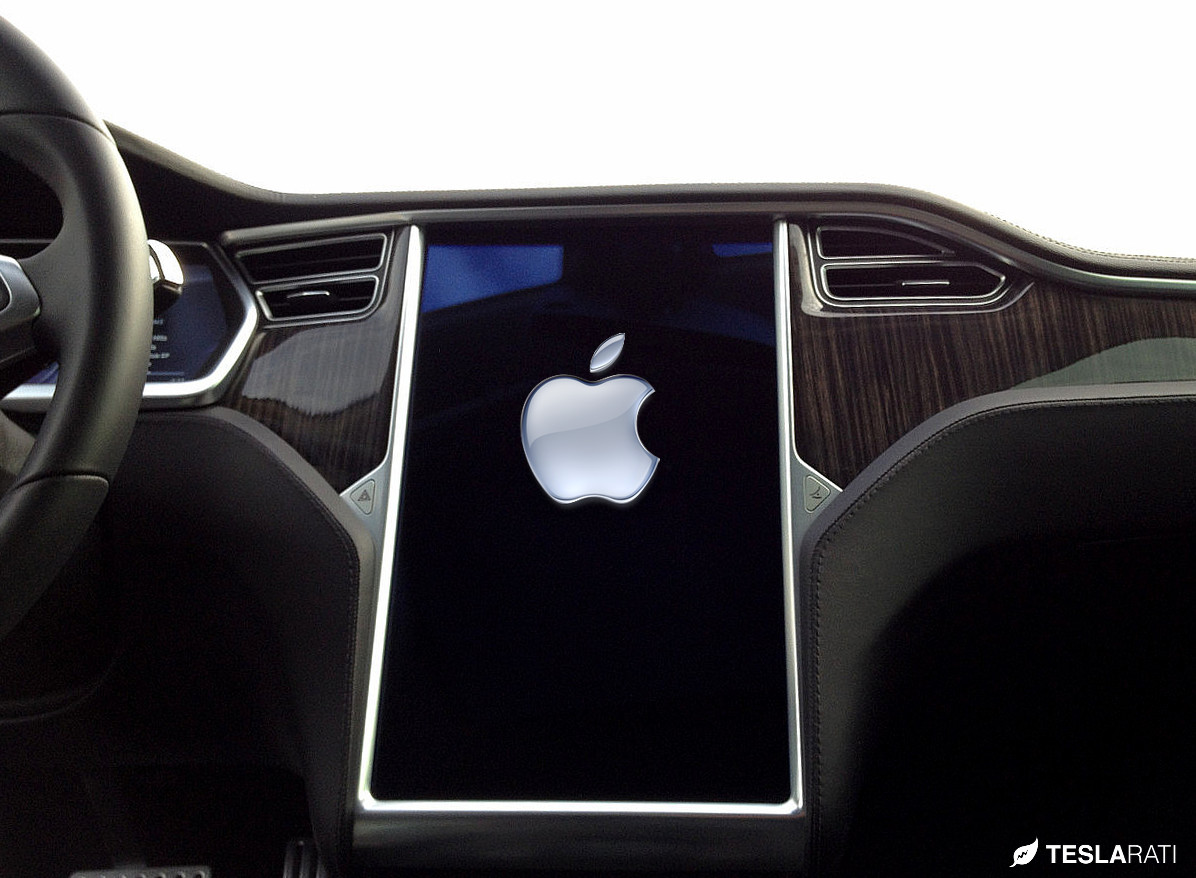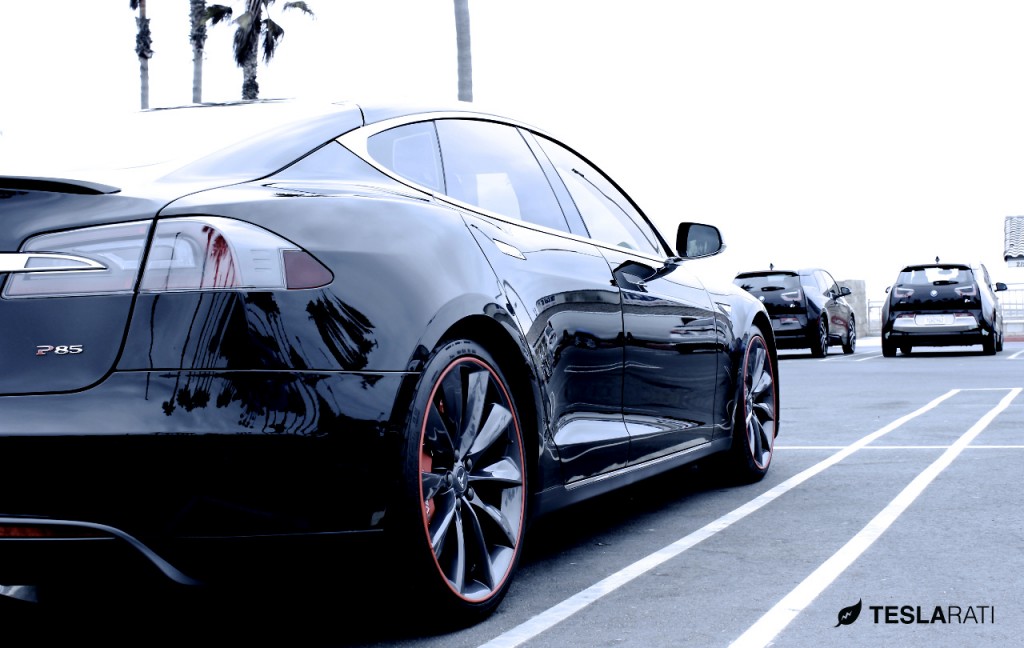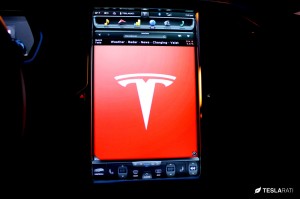News
Buy Tesla or Build One: Why Apple Should Make a Car

Once Upon a Tesla
First there were the rumors that Apple might buy Tesla. Then came the loose talk about Apple employing an army of engineers to build their own car, many apparently leaving Tesla to join the effort and cashing in nicely. Now the rumors about Apple buying Tesla are back. Really, it’s hard to keep up.
It’s difficult to believe that the closed shop and tight-lipped Apple culture would purposely leak this kind of intel. Was it a disgruntled employee? Perhaps it’s just more difficult to keep a secret these days with Social Media eavesdropping as if it were a fly on the wall. Or, maybe it’s nothing at all.
Disclaimer
I drive a Model S and own TSLA stock. I’m an Apple fan, but don’t own APPL. My first computer was a Macintosh Powerbook 165 Series made in 1993. I still have it and it boots up even today. I’ve purchased a vast number of Apple products over the decades and I can’t think of a brand I’m more invested in than Apple. As an admirer of great design they won me over early on and continue to do so. And, I’ll be one of the first to get my wrist on the Apple Watch in April.
Barriers Were Made to be Broken
The idea of Apple designing and building a car is not new. For years many of us have been playing the game, “What would (fill in the blank) look like if Apple made it?” It’s right up there with the design school project to sketch out the “internet enabled refrigerator.” Apple broke the music barrier, the phone barrier and the design barrier for computers. Tesla broke the electric car barrier and they did it in ten years. They are the Jackie Robinson of the auto industry having flung open the door to electric vehicles while traditional auto makers refused to even seriously try.
Certainly there is some effort out of Detroit and others as of late and they should be applauded for realizing their miss. Mr. Musk’s gift of releasing Tesla’s patents was completely in line with the Tesla Way. I wonder how much of that intellectual property is being incorporated by others? My guess is not much. Companies prefer to take credit for their own innovation and invention; always thinking they can do it better.
Panic in Detroit
The media likes stirring the pot about how BMW is going to eat Tesla’s lunch and GM could put Tesla out of business tomorrow. And how Porsche is developing a “Tesla Fighter.” Today’s electric car activity outside of Tesla would not even be in the blue sky discussions if it weren’t for the success of the Model S. Tesla should not be dismissed as an “ankle biter,” which I would define as a non-threatening annoyance. Tesla is in fact a real threat to the car “smoke stack” industry. Respect Tesla or not, but know they are not going away. They may evolve or merge and it may not always be about cars, but it will likely be about some combination of energy and transportation, built on software and brilliant design.
I make no bold predictions about Tesla’s potential market cap or when Apple will buy Tesla or for how much. That’s not my arena so I will stay in my lane. I agree it’s fun, but the stakes are on an entirely new level here. This activity is about something more important than corporate profits. (I know profits are important. I work in financial services). Tesla is fundamentally about designing and enabling an entirely new future that is more environmentally responsible than the past and better for consumers.
Tesla should inspire our imagination, not make us think about their stock price or how many cars they sold yesterday. Google didn’t think about their stock price when they launched their Autonomous Car project. Newer companies have a distinct advantage in that they don’t need to repack their baggage. When you lack a history it’s easier to make a better future.
It’s fascinating to me that Tesla and potentially Apple have more insight into what the “car of the future” could be than GM, Ford, or Chrysler. Is Silicon Valley the new Detroit?
Why Apple Must try for a Car
The world has become more connected over the last few years. The Internet of Things, powerful wireless connectivity and the transition to internet IPv6 will greatly expand the number of IP addresses that can be supported and makes a fully connected world possible. Apple’s seamless integration of device, content and software has made that world vision believable.
A large touchscreen in a car like the Tesla could emulate your Mac, or iPad, or iPhone screen with shared apps and programs. My iCalendar already synchs with that touchscreen from my iPhone as soon as I open the door. Apple’s software capabilities could take this to fascinating extremes. Music, programs, even Siri are all possible in an Apple Car operating system. Not to mention self-driving cars and the ultimate vision to eliminate collisions.
I believe the challenge for Apple lies in the hardware. A car is not a music player or a phone. No one drives an Apple product. It doesn’t have wheels or doors; nor does it carry precious human cargo. There are very few laws that govern phone safety. No crash tests to pass, or airbags to install. A car is not just a software engineering exercise that needs a shell. It’s a big, complex, and messy manufacturing problem that cannot be outsourced to Foxconn.
Tesla does have amazing software, but it did not, and could not abandon the deeply ingrained culture of what it means to own and drive a car. Tesla’s big robotic engineering science coupled with Apple’s software capabilities would make an unstoppable combination.
Tim Cook tackling transportation is akin to Steve Jobs entering the retail space. It makes perfect sense for Apple and Apple’s vision. Their culture is to be a catalyst for innovation, vision and ultimately forward change. These are arguably the most important attributes for any business or culture.
If Apple is serious about making a car, they can choose their adventure. Buy Tesla, or build it on their own. Either way, I’m excited that we have another bright set of minds at work on disrupting a carbon monopoly. If Apple is now seriously in the game, it’s GM, Ford, Chrysler, BMW, Toyota, Honda, Nissan, BMW, Subaru… who should keep an eye on their lunch.
My One Prediction
Fast forward to 2021. Apple unveils their version of a car. Turns out I do have a prediction after all, and it’s rock solid. Apple will not sell their cars through a dealership network.

News
Elon Musk’s Grokipedia surges to 5.6M articles, almost 79% of English Wikipedia
The explosive growth marks a major milestone for the AI-powered online encyclopedia, which was launched by Elon Musk’s xAI just months ago.

Elon Musk’s Grokipedia has grown to an impressive 5,615,201 articles as of today, closing in on 79% of the English Wikipedia’s current total of 7,119,376 articles.
The explosive growth marks a major milestone for the AI-powered online encyclopedia, which was launched by Elon Musk’s xAI just months ago. Needless to say, it would only be a matter of time before Grokipedia exceeds English Wikipedia in sheer volume.
Grokipedia’s rapid growth
xAI’s vision for Grokipedia emphasizes neutrality, while Grok’s reasoning capabilities allow for fast drafting and fact-checking. When Elon Musk announced the initiative in late September 2025, he noted that Grokipedia would be an improvement to Wikipedia because it would be designed to avoid bias.
At the time, Musk noted that Grokipedia “is a necessary step towards the xAI goal of understanding the Universe.”
Grokipedia was launched in late October, and while xAI was careful to list it only as Version 0.1 at the time, the online encyclopedia immediately earned praise. Wikipedia co-founder Larry Sanger highlighted the project’s innovative approach, noting how it leverages AI to fill knowledge gaps and enable rapid updates. Netizens also observed how Grokipedia tends to present articles in a more objective manner compared to Wikipedia, which is edited by humans.
Elon Musk’s ambitious plans
With 5,615,201 total articles, Grokipedia has now grown to almost 79% of English Wikipedia’s article base. This is incredibly quick, though Grokipedia remains text-only for now. xAI, for its part, has now updated the online encyclopedia’s iteration to v0.2.
Elon Musk has shared bold ideas for Grokipedia, including sending a record of the entire knowledge base to space as part of xAI’s mission to preserve and expand human understanding. At some point, Musk stated that Grokipedia will be renamed to Encyclopedia Galactica, and it will be sent to the cosmos.
“When Grokipedia is good enough (long way to go), we will change the name to Encyclopedia Galactica. It will be an open source distillation of all knowledge, including audio, images and video. Join xAI to help build the sci-fi version of the Library of Alexandria!” Musk wrote, adding in a later post that “Copies will be etched in stone and sent to the Moon, Mars and beyond. This time, it will not be lost.”
News
Tesla Model 3 becomes Netherlands’ best-selling used EV in 2025
More than one in ten second-hand electric cars sold in the country last year was a Tesla Model 3.

The Tesla Model 3 became the most popular used electric car in the Netherlands in 2025, cementing its dominance well beyond the country’s new-car market.
After years at the top of Dutch EV sales charts, the Model 3 now leads the country’s second-hand EV market by a wide margin, as record used-car purchases pushed electric vehicles further into the mainstream.
Model 3 takes a commanding lead
The Netherlands recorded more than 2.1 million used car sales last year, the highest level on record. Of those, roughly 4.8%, or about 102,000 vehicles, were electric. Within that growing segment, the Tesla Model 3 stood far ahead of its competitors.
In 2025 alone, 11,338 used Model 3s changed hands, giving the car an 11.1% share of the country’s entire used EV market. That means more than one in ten second-hand electric cars sold in the country last year was a Tesla Model 3, Auto Week Netherlands reported. The scale of its lead is striking: the gap between the Model 3 and the second-place finisher, the Volkswagen ID3, is more than 6,700 vehicles.
Rivals trail as residual values shape rankings
The Volkswagen ID.3 ranked a distant second, with 4,595 used units sold and a 4.5% market share. Close behind was the Audi e-tron, which placed third with 4,236 registrations. As noted by Auto Week Netherlands, relatively low residual values likely boosted the e-tron’s appeal in the used market, despite its higher original price.
Other strong performers included the Kia Niro, the Tesla Model Y, and the Hyundai Kona, highlighting continued demand for compact and midsize electric vehicles with proven range and reliability. No other model, however, came close to matching the Model 3’s scale or market presence.
News
Tesla Model Y Standard Long Range RWD launches in Europe
The update was announced by Tesla Europe & Middle East in a post on its official social media account on X.

Tesla has expanded the Model Y lineup in Europe with the introduction of the Standard Long Range RWD variant, which offers an impressive 657 km of WLTP range.
The update was announced by Tesla Europe & Middle East in a post on its official social media account on X.
Model Y Standard Long Range RWD Details
Tesla Europe & Middle East highlighted some of the Model Y Standard Long Range RWD’s most notable specs, from its 657 km of WLTP range to its 2,118 liters of cargo volume. More importantly, Tesla also noted that the newly released variant only consumes 12.7 kWh per 100 km, making it the most efficient Model Y to date.
The Model Y Standard provides a lower entry point for consumers who wish to enter the Tesla ecosystem at the lowest possible price. While the Model 3 Standard is still more affordable, some consumers might prefer the Model Y Standard due to its larger size and crossover form factor. The fact that the Model Y Standard is equipped with Tesla’s AI4 computer also makes it ready for FSD’s eventual rollout to the region.
Top Gear’s Model Y Standard review
Top Gear‘s recent review of the Tesla Model Y Standard highlighted some of the vehicle’s most notable features, such as its impressive real-world range, stellar infotainment system, and spacious interior. As per the publication, the Model Y Standard still retains a lot of what makes Tesla’s vehicles well-rounded, even if it’s been equipped with a simplified interior.
Top Gear compared the Model Y Standard to its rivals in the same segment. “The introduction of the Standard trim brings the Model Y in line with the entry price of most of its closest competition. In fact, it’s actually cheaper than a Peugeot e-3008 and costs £5k less than an entry-level Audi Q4 e-tron. It also makes the Ford Mustang Mach-E look a little short with its higher entry price and worse range,” the publication wrote.










